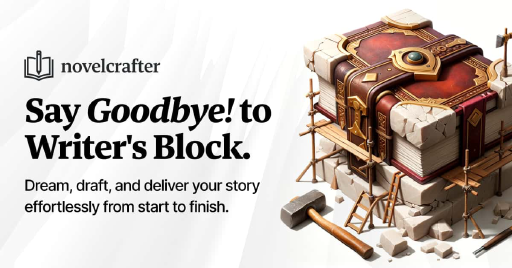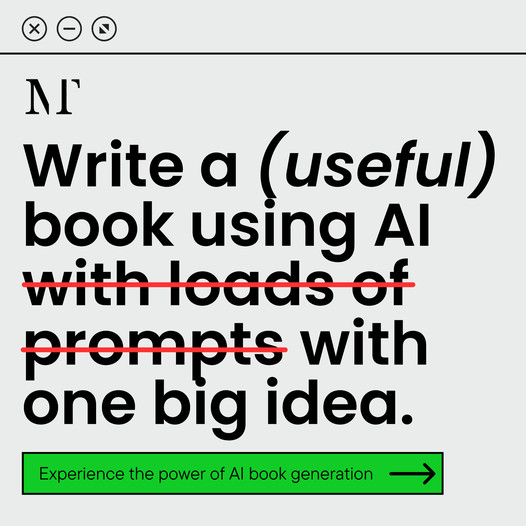Mastering the Art of Synopsis Writing
Nailing a synopsis is a skill all writers should have up their sleeve. It’s your chance to distill your story down to its juicy core while sharing its vibes.
Why You Need a Synopsis
So, why bother with a synopsis? Well, it’s your pitch-perfect summary when knocking on the doors of agents or publishers. It clearly lays out your story’s blueprint and also makes it a lot easier to spot any hiccups in your characters or plot, letting you buff up your manuscript.
| Purpose of a Synopsis | Description |
|---|---|
| Story Snapshot | Outlines events and character journeys. |
| Pitching Tool | Your go-to when courting agents and publishers. |
| Spotting Flaws | Helps see any hiccups in plot or character arcs. |
What Makes a Winning Synopsis
A standout synopsis ticks a few special boxes. It’s gotta be interesting, informative, and showcase your story’s spark. Shine a light on your main character, the heart of your story’s conflict, and key plot twists. Striking the perfect mix of detail and to-the-point info makes a killer first impression.
| Element | Description |
|---|---|
| Captivating Start | Gets interest from the jump. |
| Clear Direction | Spells out the main storyline and kerfuffle. |
| Character Spotlight | Puts main characters and what drives them in focus. |
| Story’s Quirks | Highlights what makes your tale stand out. |
Knowing how to whip up a synopsis is a crucial stop on your writing trek. For more tips to polish your writing craft, check out our piece on how to improve writing skills — it’s packed with ways to boost your storytelling game.
Key Components of a Synopsis
Crafting a good synopsis is like cooking a stew – you need the right ingredients to make it tasty and alluring. Here are the must-haves for any synopsis:
Concise Summary of the Plot
Kick things off with a simple and snappy rundown of the plot. Think of it like telling a friend about the movie you watched last night – just enough for them to get the gist without spilling all the beans. Touch on the start, the juicy middle bits, and the grand finale, leaving your reader curious for more.
| Part | What’s Included |
|---|---|
| Kick-off | Lay out the scene and initial situation. |
| Crunch Time | Put the spotlight on big moments or turning points. |
| Wrap-up | Dish out the ending or the story’s resolution. |
Introduction to Main Characters
Next up, you’ll want to give a quick shout-out to your main characters, so readers know who they’re cheering for. Keep it short and sweet: who they are, what they’re about, and how they connect to the storyline. This paints a clear picture of who’s who and how they mix it up in the plot.
| Character Type | Info Needed |
|---|---|
| Hero | Brief on their aims and hurdles. |
| Villain | Spotlight their part in making life tough for the hero. |
| Sidekicks | Mention those helpful pals or mentors aiding the hero. |
Revealing the Conflict and Resolution
Every gripping tale has some stormy weather—and your synopsis should spill just enough about it. Explain what’s shaking up the protagonist’s world and what they stand to lose. Also, give a sneak peek into how things get sorted out, so there’s some sense of closure without giving away too much.
| Conflict Angle | What’s It About |
|---|---|
| Mind Games | Share the character’s inner battles or tough choices. |
| Outer Struggles | Lay out the hurdles thrown by others or the world. |
| The Big Fix | Just hint at how the chaos winds down or is managed. |
There you have it: the secret sauce to a killer synopsis. Master these – plot rundown, character intros, and conflict wrap-up – and you’re halfway there to painting an enticing picture of your story. Want more tips on bringing your characters to life? Check out our article on how to develop characters in a story.
Crafting Your Story Recap
Turning your story into a digestible recap takes a bit of craftiness. Let’s break it down into grabbing attention right off the bat, zeroing in on the core of your tale, and showing why your characters are up to what they’re doing.
 What Poetry Feels Like
What Poetry Feels LikeKick Off with a Splash
You’ve got to reel your reader in from the get-go. Kick off with something that captures your story’s vibe—a dramatic moment, a question that makes you think, or a statement that puts everything on the line. Your opener should be like a dare to keep reading.
For instance:
| Wow Factor | What It Does |
|---|---|
| Dramatic Moment | Plunges the reader into high stakes and drama. |
| Intriguing Question | Gets the gears turning on your story’s big issue. |
| Bold Statement | Packs a punch with your theme or big idea. |
Zero in on What Really Matters
After snagging them with your opening, hone in on your story’s heart. Give a tidy sum-up of the events that keep the gears turning. Don’t get bogged down in details—stick to what’ll keep it snappy. Include how it kicks off, the juicy middle bits, and the wrap-up. Bring out the big plot twists and shifts.
Here’s a cheat sheet:
- Kickoff: Lay down the setting and what sparks things off.
- Hoopla: Walk through the meat of the action up to the big explosion of energy.
- Bang: Describe the peak moment and why it matters.
- Wrap-Up: Sketch out how it all shakes out and what it means for the characters.
Get into the Characters’ Heads
Why do your characters do what they do? Spill the beans on what drives them. Dig into what pushes your main folks and why they butt heads. This adds layers and helps the reader vibe with their paths.
Think about sharing:
| Player | What Makes Them Tick |
|---|---|
| Hero | What’s lighting a fire under them or keeping them up at night? |
| Villain | What’s their endgame and why are they making life hard for the hero? |
| Sidekicks | How do they change the hero’s path? |
By drumming up interest with a lively opener, homing in on the core story, and unveiling what motivates your characters, you’re setting up a recap that will catch the eye of agents, publishing folks, and your audience. For more pointers, hop over to our tips on upping your writing game and other handy links throughout the piece.
Writing Style and Formatting
When you’re knocking out your synopsis, nailing the right style and format is key to getting it just right. Here’s how to make sure it’s on point.
Keep It Clear and Grab Attention
Let your style shine through while keeping things straightforward. An easygoing tone reels in readers and makes your synopsis resonate better. Check out these pointers for keeping a rock-solid voice:
| Aspect | Tips |
|---|---|
| Tone | Match your tone with the story’s vibe (like lighthearted for a comedy or intense for a thriller). |
| Consistency | Stick with the same voice all the way through for smooth reading. |
| Readability | Keep it simple—chop up long sentences and skip the fancy words. |
Go With Active Words
Using an active voice cranks up the energy, keeping things clear and snappy. Active words throw the reader smack into the action. Here’s how to punch up your writing with vitality:
| Strategy | Example |
|---|---|
| Subject-Verb Agreement | Instead of “The book is filled with action,” go for “The story explodes with action.” |
| Strong Verbs | Use lively verbs like “charges,” “reveals,” and “faces” instead of bland ones. |
| Direct Language | Keep your sentences tight, sticking to what really matters. |
Nail the Structure and Length
How you put together your synopsis and its length really matters for getting across your story’s essence. Aim between 500 and 1,000 words, based on what publishers or agents want. Here’s how to break it down:
| Element | What to Include |
|---|---|
| Introduction | Kick off with the basics—introduce your main character and where everything’s going down. |
| Body | Dive into the drama with the main conflict, key events, and what drives your characters. Show their journey. |
| Conclusion | Wrap things up with how it all ends, no cliffhangers needed. |
For a deeper dive into honing your writing chops, swing over to our piece on how to improve writing skills. Stick to these tips, and your synopsis will fire on all cylinders, giving your story a great showcase.
Editing and Refining
Grab your favorite coffee, sit back and let’s polish that synopsis till it sparkles! Editing isn’t just about fixing typos; it’s giving your draft the attention it deserves to make it clear and stand out. Let’s break it down step by step.
Revise for Clarity and Impact
Start by asking yourself: ‘Does it make sense to anyone other than me?’ Remove any confusion or tricky words—you want your ideas to hit home without the reader scratching their head. Stick with short, punchy sentences that anyone from 8th grade onwards can breeze through.
| Revision Focus | Action Steps |
|---|---|
| Clarity | Toss out the flowery language; put it plain and simple. |
| Impact | Shine a light on what makes your story worth the read. |
| Consistency | Keep the tone, style, and info on the same wavelength. |
Seek Feedback
Time to pass your draft to a select few—like passing a secret note in class. Share with those who write or love your genre—they’ll tell you what works and what still needs TLC.
| Feedback Source | Considerations |
|---|---|
| Fellow Writers | Pick their brains on the nuts and bolts of your draft. |
| Target Readers | Are they hooked, or did they fall asleep? |
| Beta Readers | They’ll be your go-to for emotion and overall interest. |
Ask them if they ‘get’ the hurdles and if your characters leave a mark. Take their insights to heart, and tweak your draft to perfection.
Fine-tuning for Professionalism
Now, make sure your draft looks as sharp as a new pencil. Proper formatting is your best friend here—neat and tidy is the name of the game.
| Professional Element | Best Practices |
|---|---|
| Length | Keep it snappy, 1-2 pages should do it. |
| Formatting | Classic fonts, double spacing, and room in the margins to breathe. |
| Editing | Scrub out any grammar goofs or spelling slip-ups. |
A slick and polished synopsis can open doors you didn’t even knock on. For more writing wisdom, swing by how to improve writing skills. Keep at it, and let your story grow as you do.
Tips for Success
Show Off What Makes You Different
When you’re piecing together your story’s synopsis, focus on what makes your tale shine. What sets it apart from all those cookie-cutter plots out there? Whether it’s a wild plot twist, some quirky character combos, or a theme that pulls on heartstrings, that’s your bread and butter. Show off these unique gems to convince readers your story is worth their time.
Make a simple list or table to draw comparisons with typical genre tropes. This can help you zero in on what makes your narrative pop.
| What’s Up? | Your Tale | Genre Clichés |
|---|---|---|
| Conflict | A strange love tale | The classic love triangle |
| Location | A gritty future city | Present-day settings |
| Characters | A flawed but relatable heroine | The all-too-perfect hero |
Show Off Your Story’s Heart
Your synopsis isn’t just a summary; it should capture the soul of your story. It’s not all about what happens, but how it feels and what it says. Use language that mirrors the mood and vibe of your tale, but don’t go overboard. Keep it catchy for your audience by hitting the right emotional notes that they love.
Try practicing by writing your story’s essence in a sentence or a longer blurb. Do this a few times, and you’ll get the hang of distilling your story’s essence effectively.
Keep Practicing, You’ll Get There
Nailing down a killer synopsis is a marathon, not a sprint. Start with a draft, then step away for a bit. When you circle back, look at it with fresh eyes and polish it up. People you trust can be goldmines for feedback, offering fresh takes on your synopsis’s strengths and areas for a tune-up. For a deeper dive into brushing up those writing chops, head over to our guide on improving writing skills.
Just keep chipping away at it and remember: practice makes perfect. The more you brave the synopsis-writing waters, the more natural it will feel.

 Grab my poetry book, 'we're all just wanderers in the end' Here
Grab my poetry book, 'we're all just wanderers in the end' Here AD: Your Book Finally Written...
AD: Your Book Finally Written...